
About Andrew Cusack
 Writer, web designer, etc.; born in New York; educated in Argentina, Scotland, and South Africa; now based in London.
Writer, web designer, etc.; born in New York; educated in Argentina, Scotland, and South Africa; now based in London. read more
News
Blogs
Reviews & Periodicals
Arts & Design
World
France
Mitteleuropa
Knickerbockers
Argentina
The Levant
Africa
Cape of Good Hope
Netherlands
Scandinavia
Québec
India
Muscovy
Germany
Academica
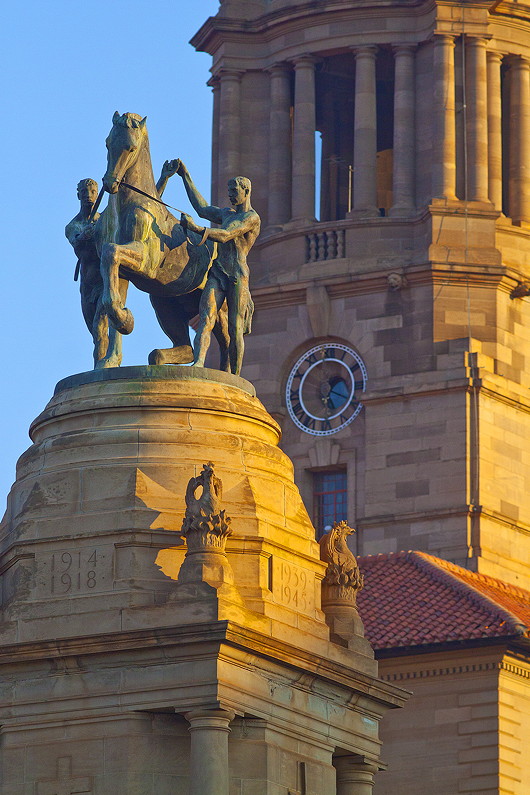
Pretoria Philadelphia
Andries Pretorius grew up on his father’s farm near Graaf-Reinet in the Cape of Good Hope, but the Great Trek took him (and many other Boers) into the South African interior. Pretorius’s victory, against all odds, over Dingane’s Zulu forces at Blood River in 1838 was to be commemorated from that day forevermore by Afrikaner piety as Geloftedag — the Day of the Vow. When the South African Republic (ZAR) was established in 1852 the capital was Potchefstroom, but Andries’s son Marthinus founded the city of Pretoria Philadelphia in 1855 to be the new capital of the Transvaal.
The four colonies at the end of the continent were conjoined in 1910 as the Union of South Africa, with Pretoria (as it was soon shortened to) named the seat of the executive and thus the nation’s capital. The parliament met in Cape Town and the highest courts in Bloemfontein so that, in some sense, the new nation had three capitals — administrative, legislative, and judicial. As the seat of the visible sovereignty of the realm, the Governor-General, as well as the Prime Minister’s administration and cabinet, however, it was Pretoria that held precedence.
We’ve already examined Kerkplein — Church Square — at the heart of the city, but the rest of the capital is worth exploring further.
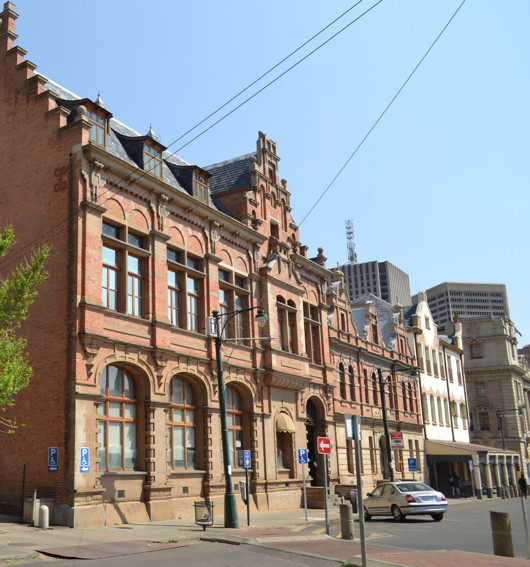
The old Nederlandsche Bank harkens back to the Dutch renaissance and now welcomes visitors to the city as a tourist information centre.
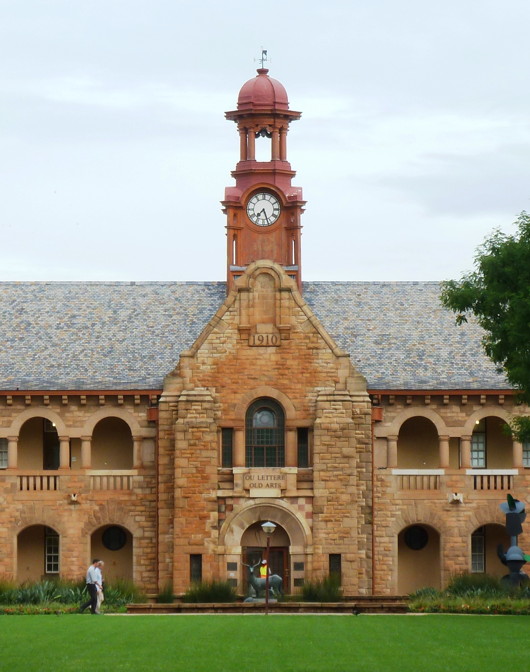
The University of Pretoria — nicknamed “Tuks” — boasts architecture old and new. The first governor-general, Viscount Gladstone, laid the foundation stone of the Ou Letteregebou (above) in 1910. Its largest assembly hall, the Aula (below), dates from nearly half a century later when it was opened by the eighth governor-general, Dr E G Jansen, with a performance by Mimi Coertse.
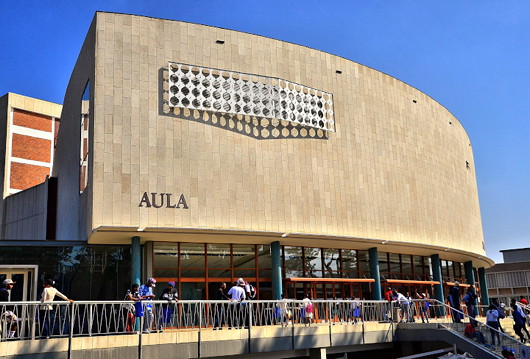
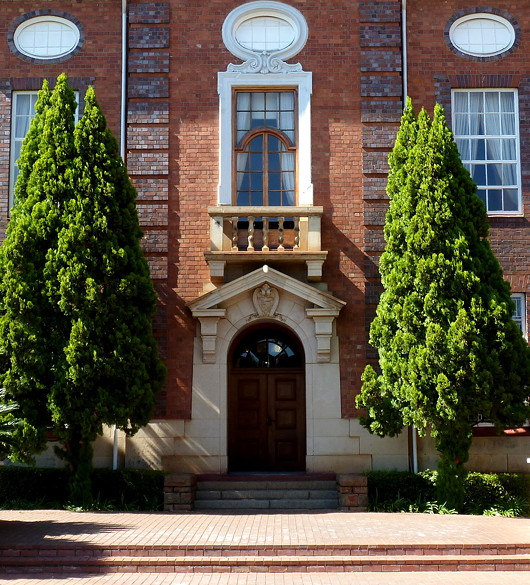
The Afrikaanse Hoër Meisieskool (Afrikaans Girls High School) is the daughter institution of the first secondary school in which Afrikaans — instead of Dutch — was the primary language of instruction, founded in 1920 in the home of Genl. Joubert.
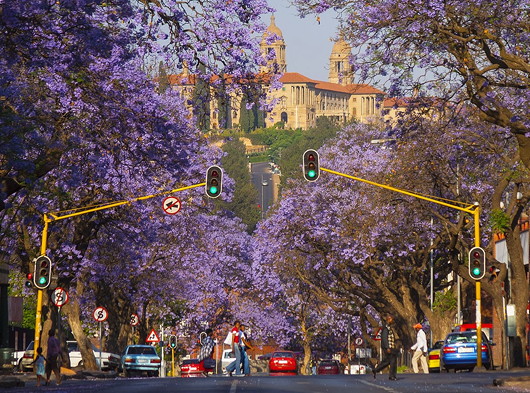
It would be remiss to speak of Pretoria and without mentioning its moniker of die Jakarandastad — the city of Jacarandas. From late September until the middle of November, much of the capital is bathed in the blueish purple aura of the blooming Jacaranda trees.
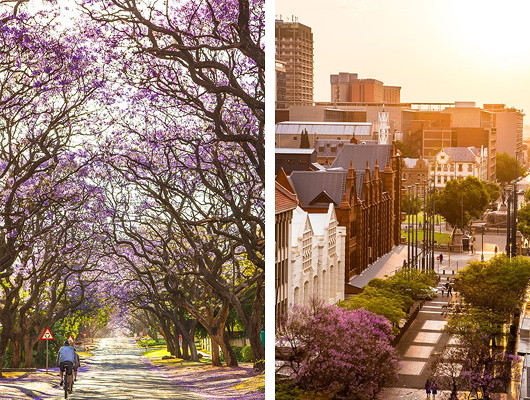
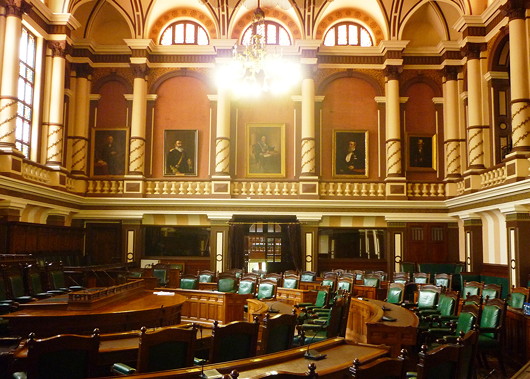
The parliament of the ZAR met in the old Volksraad chamber until the Republic was annexed by the British after the Boer War.
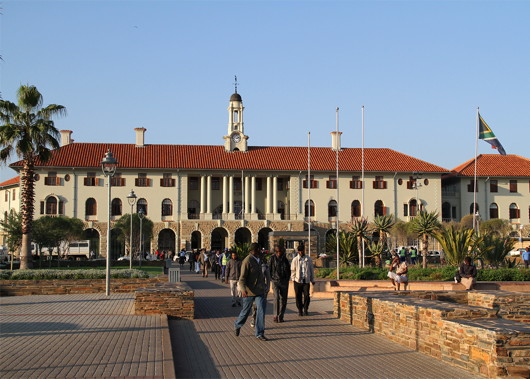
The capital’s railway station was designed by the ubiquitous Herbert Baker. As an architect he was excellent at detail but Baker’s buildings often lack completeness when looked at as a whole. Here, for example, why does the roof sit so squatly atop the facade without any intermediary form?
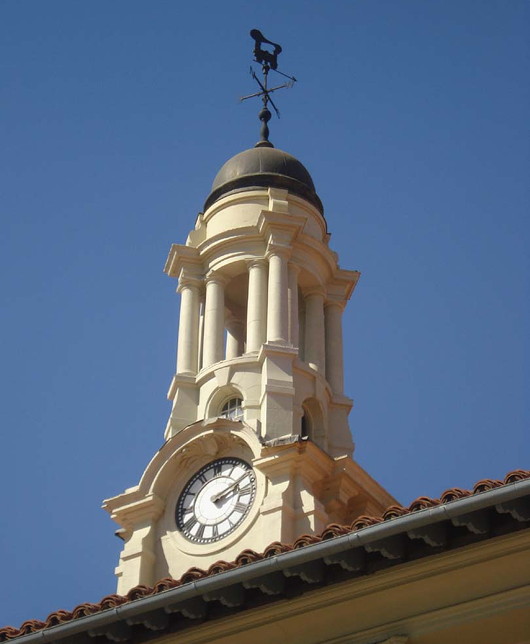
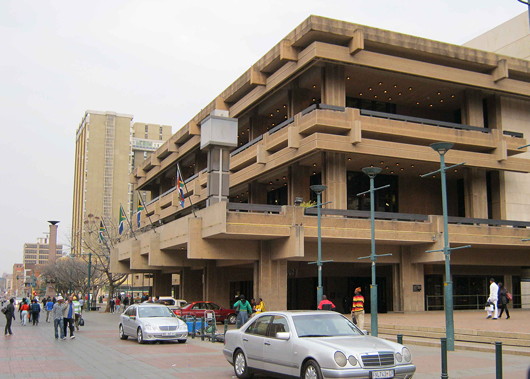
The artless brutalism of the Staatsteater, Africa’s largest performing arts complex, leaves something to be desired.
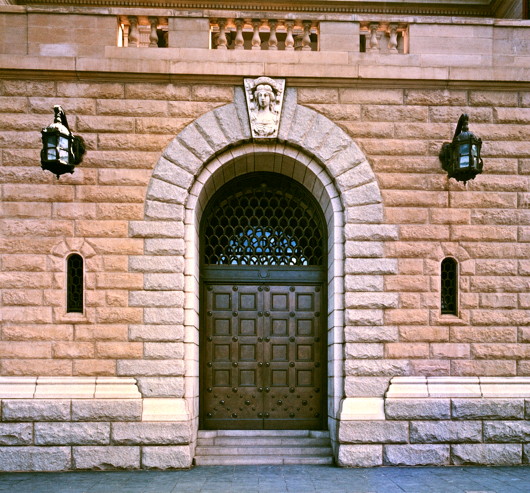
But the sturdy South African Reserve Bank (yet another Baker edifice) makes you feel your krugerrands will be safe lodged deep within.
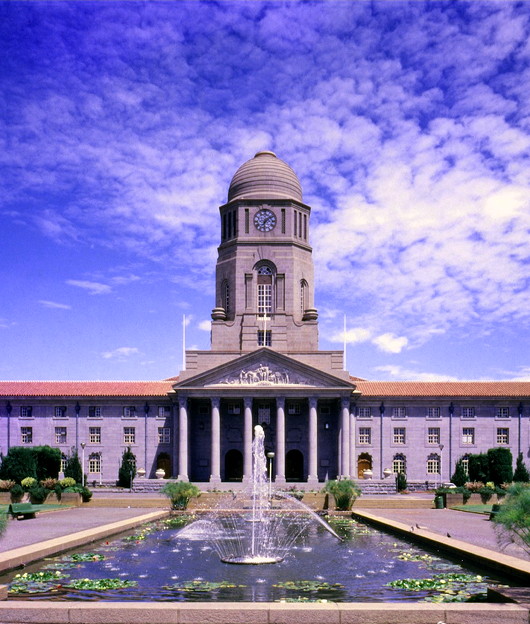
The Stadsaal, or City Hall.
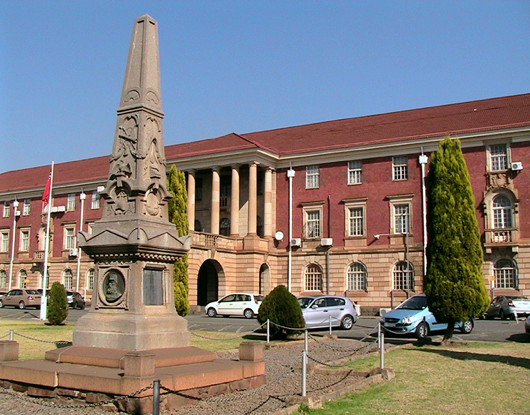
South African Army Headquarters.
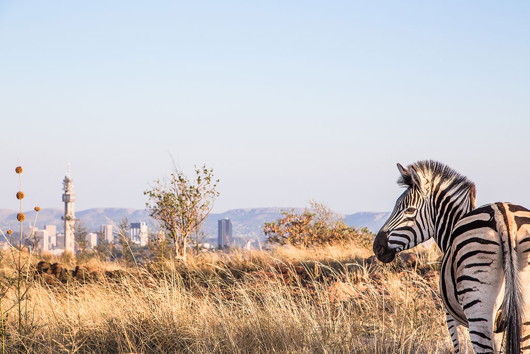
Klapperkop Nature Reserve on the south side of Pretoria.
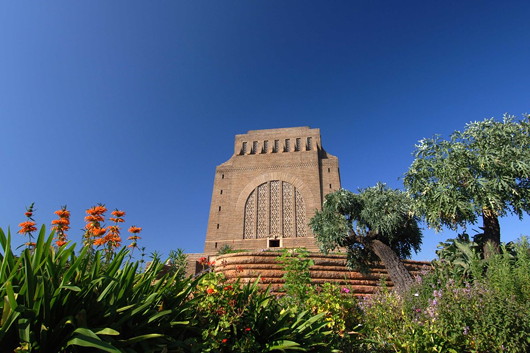
The Voortrekker Monument commemorates the pioneers who undertook Great Trek of the 1830s, 40s, and 50s. The bulky and solemn memorial was designed by Gerard Moerdijk and inaugurated in 1949 by the prime minister, Dr D F Malan.
It is constructed so that every year at midday on the Day of the Vow, the sun falls directly through an opening in the roof to shine directly on the cenotaph in the middle of the monument.
The interior is influenced by the tomb of Napoleon at Les Invalides, while the exterior is more suggestive of the Völkerschlachtdenkmal near Leipzig. Moerdijk also visited the Temples of Karnak at Thebes while he was finalising his design for the Voortrekker Monument.
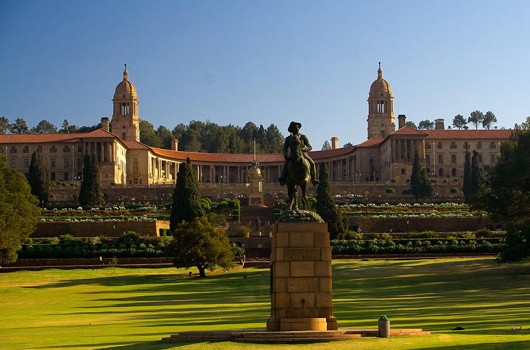
Perhaps the most famous structure in the capital, however, is the Union Buildings (Uniegebou) on Meintjieskop. They command the best view of Pretoria, with a procession of beautifully manicured gardens gently rolling down the kop towards what is now Stanza Bopape Street that leads into Church Square.
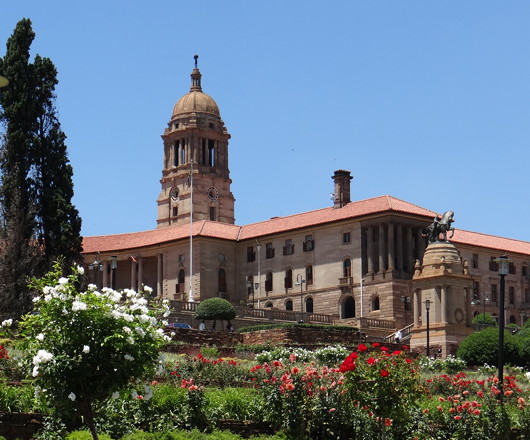
Herbert Baker (him again!) was commissioned to design the new administrative centre of the Union of South Africa, and his design was widely influenced by early Cape Dutch architecture, the Italian Renaissance, and the English Baroque. The pair of domes in particular recalls the Royal Hospital at Greenwich.
Several presidential inaugurations have taken place in its amphitheatre, including that of Mr Mandela in 1994. The offices of the presidency and the cabinet are here, so these buildings on Meintjieskop are the beating heart of the South African government.
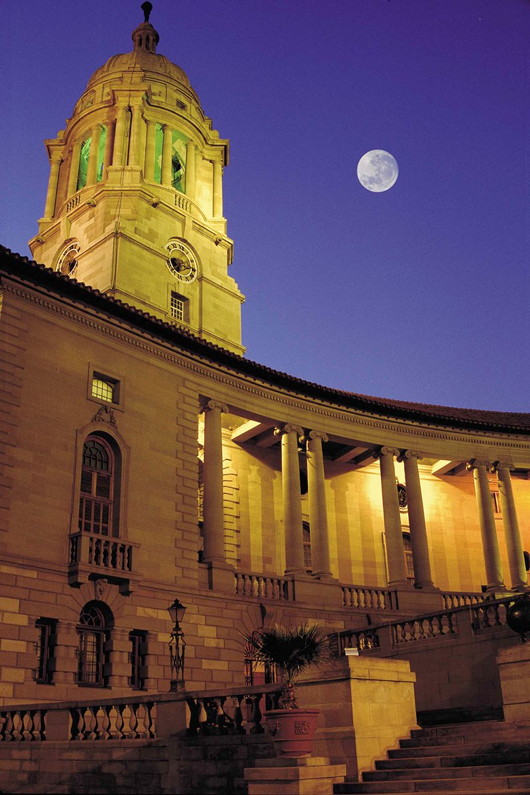
Search
Instagram: @andcusack
Click here for my Instagram photos.Most Recent Posts
- Silver Jubilee November 21, 2024
- Articles of Note: 11 November 2024 November 11, 2024
- Why do you read? November 5, 2024
- India November 4, 2024
- The Lithe Efficiency of the Old Constitution November 4, 2024
Most Recent Comments
Book Wishlist
Monthly Archives
Categories



Which came first, the Railway Station or the South African Army HQ?